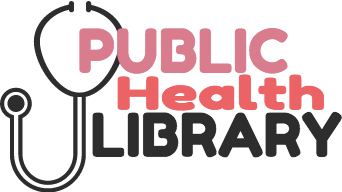If you have recently been diagnosed with a condition that causes chronic pain, you probably already know that treatment doesn’t follow the standard medical model. With most illnesses, you have a diagnosis, get medical treatment, and with time and rest, you get better. Chronic pain is complex, and treatment isn’t so simple. But that doesn’t mean you’re helpless, even if you feel that way now. By identifying pain triggers and working to eliminate these with some lifestyle changes, you actually can make major strides in reducing pain.
The Mental Health Connection
Your experience of chronic pain is very much connected to mental health. Stress, depression, anxiety, and anger can all come from having chronic pain, and at the same time, these feelings can make pain worse. This connection between pain and emotions is more than just mind over matter. According to the University of Michigan Depression Center, “Depression and chronic pain share some of the same neurotransmitters … as well as some of the same nerve pathways.” This means depression actually causes your sense of pain to be worse, so if you struggle with mental health, treat anxiety or depression first to break this cycle.
The upside of this connection is that for some people, treating anxiety and depression with medication can really help improve both mental health and pain. Even with antidepressants, you should still take an active approach to manage pain and stress with mindfulness. Some of the strategies you can use include relaxation training, visual imagery, and distraction. Spine-Health is a great resource that explains how these work and gives 11 chronic pain control techniques.
While antidepressants can help with chronic pain, be wary of pain treatment medications like opioids, because they are highly addictive and can actually be a trigger for pain, making it worse in the long run. These medications take the pain away in the short term, but the way they work to block pain means you eventually need higher and higher doses to get the same effect. These medications also have a depressive effect on your mood, so even though they provide temporary relief, their long-term use can be dangerous and even make pain worse. Before taking any medications, make sure you have an honest discussion with your doctor.
Lifestyle Changes that Really Work
Caring for your mental health is a huge part of managing chronic pain, and right alongside that are other lifestyle factors that make a big difference.
- Exercise – Moderate exercise helps regulate your mood by releasing endorphins (the feel-good chemicals in your brain). According to Medical News Today, low-impact aerobic exercise, core-strengthening exercises, and improved flexibility are all especially good for preventing flare-ups of back pain. Keep in mind that making the trip to the gym every day isn’t necessary. If you find that flare-ups and time aren’t on your side, invest in home gym equipment so you can exercise at your own pace and on your own time.
- Diet – Eating a good diet of minimally processed foods can reduce inflammation. Avoid refined carbohydrates and fried foods because these cause inflammation, and add in foods that reduce inflammation, like olive oil, leafy greens, nuts, and fatty fish. Eating a diet that takes special care of your gut health is equally as important, as the state of this microbiome can influence everything from happiness to our overall well-being. It also plays an important role in managing your immune system.
- Sleep – Not getting enough sleep is a common trigger for chronic pain. Our bodies make human growth hormones while we sleep, which repairs tissue and eases pain. If you suffer from insomnia, there are simple adjustments you can make to sleep better. Remove TVs and other electronic devices from your bedroom, and avoid using digital screens before bedtime to get the best rest. Exercise during the day (but not too close to bedtime) also helps you get a better night’s sleep.
- Posture and workspace – The way you carry and move your body can affect pain, so be conscientious of having good posture and how your home or workspace contributes. See if you need to make more ergonomic adjustments to the spaces where you spend the most time to help encourage better posture.
- Home adaptations – Some simple modifications to your home can improve your safety and make your pain more bearable. For example, installing grab bars and adding a shower bench can make bathing easier. If you need larger-scale modifications (e.g., a kitchen or bathroom remodel), a cash out refinance may be your best option, especially if you’re a U.S. veteran. A VA cash out refinance can provide you with a cash infusion to pay for home improvements, and it’s available to active duty personnel, honorably discharged veterans, and surviving spouses who haven’t remarried.
- Smoking – According to The Cleveland Clinic, smoking makes chronic pain worse because it makes it harder for oxygen-rich blood to get to bones and tissues. Just like with prescription pain medications, it may provide temporary relief from pain, but smoking makes pain worse over the long term.
A diagnosis of chronic pain can be frustrating and make you feel a little helpless since medical treatment isn’t so straightforward. But these lifestyle changes can help tremendously, so make these changes now and take control of your pain.
Photo credit: Unsplash
